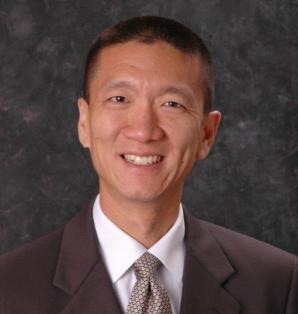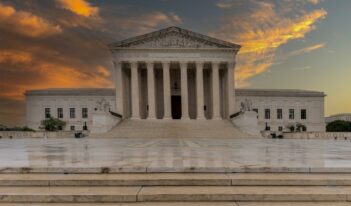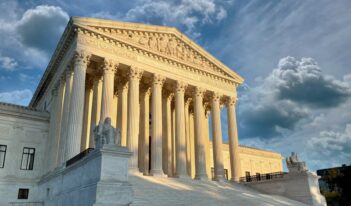
Federal courts’ blocking of President Trump’s travel bans reaffirms the strength of the American system.
The rollout of President Donald J. Trump’s initial travel ban on January 27, 2017 was by all accounts a disaster.
Air passengers were told in flight they would not be allowed to enter the United States. Lawful permanent residents from the banned Muslim-majority nations—green card holders—heard the same. Refugees who had waited years to escape horrific circumstances in their own countries were immediately barred from entering the United States. That weekend, protesters flooded airports around the country, including Honolulu’s, 5,000 miles away from Washington, D.C. Lawyers offered whatever support they could to arriving passengers to show America still cared.
But the lawyers assisting passengers at airports were not the only lawyers working that weekend. Within days of taking effect, President Trump’s first executive order was challenged in several federal courts, including in Hawaii. On February 3, 2017, a federal judge in the State of Washington enjoined the enforcement of that first order. One month later, President Trump issued what he later admitted was a “watered down” version of the first order. Lawyers went to work again to challenge the second Muslim ban, and this time, federal courts in Hawaii and Maryland issued injunctions that were both upheld in the United States Courts of Appeals for the Ninth and Fourth Circuits, respectively.
His first two executive orders blocked, President Trump issued “Travel Ban 3.0” by presidential proclamation on September 24, 2017. It was enjoined, hours before taking effect, after Hawaii successfully challenged the ban a third time. In late December 2017, the Ninth Circuit affirmed that even the third ban was illegal. The U.S. Supreme Court may finally hear arguments on the merits in the spring of 2018, and a similar challenge to Travel Ban 3.0 is making its way through the Fourth Circuit.
The legal issue with each of President Trump’s orders has been whether a President has unlimited, unreviewable authority to block entry into the United States. Most disturbingly, the U.S. Department of Justice’s repeated answer to this question has been an emphatic “yes.” Hawaii has countered that while the job of a President is to preserve national security, the President must not do so in a way that blatantly violates federal immigration law established by Congress and the Establishment Clause of the First Amendment to the U.S. Constitution.
The widespread interest in this case, of course, is not purely legal. This issue is important to Hawaii and many Americans because discrimination on the basis of race, nation of origin, religion, or sexual orientation goes against the values that make Hawaii—and America—so special. One out of five residents in Hawaii are foreign-born. That does not include the children of immigrants, like myself, or the grandchildren of immigrants, like Hawaii Governor David Ige.
The 2017 travel ban arguably targets Muslims, but other groups have been targets in the not-too-distant past. Just two examples are the Chinese Exclusion Act, which barred Chinese immigrants from entering the country, and the internment of Japanese Americans during World War II. In 1963, President John F. Kennedy proclaimed that Hawaii “represents all that we are and all that we hope to be.” The current President’s actions and accompanying statements in 2017 have felt like an attack on Hawaii’s values of pluralism, diversity, and inclusion.
Hawaii is one of the only majority minority states in the country. As such, we know firsthand what happens when prejudice overcomes reason. On February 19, 1942, Executive Order 9066 went into effect from Washington. The text of the order did not say that its purpose was to imprison Japanese Americans, German Americans, or Italian Americans, and it did not say anything about racial or ethnic discrimination. Rather, the stated purpose of the order could be found in its claim that “the successful prosecution of the war requires every possible protection against espionage and against sabotage to national-defense material, national-defense premises, and national-defense utilities.”
The result of Executive Order 9066 was the imprisonment of more than 100,000 people of Japanese ancestry. Yet no case of espionage or sabotage by a Japanese American was ever recorded during World War II.
Today, President Trump’s attorneys argue that his statements—that “Islam hates us,” that he would “strongly consider” closing mosques, and that we should have a “total and complete shutdown” of Muslims entering the country—should be ignored by the courts in considering the legality of his order. We disagree, and courts have sided with us. As Hawaii federal judge Derrick K. Watson explained when he granted Hawaii’s motion to block the Muslim ban, “the Court will not crawl into a corner, pull the shutters down, and pretend it has not seen what it has.”
President Trump could not have been more wrong when he stated that the Hawaii court’s blocking of his second Muslim ban made America look weak. It showed the resilience of the American system of government. It illustrated that even the “most powerful man in the world” is subject to checks and balances and will be held to the standards established in the United States Constitution.
In our federal system, states have a unique capability and responsibility to serve as a check on the federal government and reestablish the rule of law against a lawless administration.
This essay is part of a seven-part series, entitled Regulation in the Trump Administration’s First Year.




